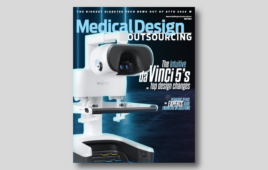Patient-specific anatomical replicas are an invaluable resource for improving pre-surgical planning. Detailed patient scans translate into 3D files ready for export to additive manufacturers, enabling virtual exploration and optimization of implants for users.
Jessica James, Synopsys, Inc.

Pediatric heterotaxy showing 3D printed (hollow) model and renderings of solid and hollow versions of the model created using Synopsys Simpleware software (Image courtesy of Synopsys)
Radiology labs have traditionally relied on software that was designed for clinical diagnosis and measurement of imaging data in order to create models. These tools were not designed to efficiently create 3D-printed models and can make creating high-quality anatomical models cumbersome.
Although there had been progress in the use of the 3D image reconstruction process and radiology, little work had been done to master the process of creating fragile and complex geometries in an accurate and repeatable way.
Tech startup Mediprint entered the pre-surgical planning space in 2015 after two years of working with physicians and studying their needs. Mediprint staff developed and streamlined 3D modeling and 3D print-handling techniques before moving on to 3D reconstruction services. They use Synopsys Simpleware software and Stratasys technology to convert grayscale 2D medical images into colorful life-sized replicas.
Examples of these techniques in use are models of hearts and tumors that are printed to allow surgeons to better understand the scale and scope of a surgical procedure. Other applications include 3D-printed models being used to develop treatments for pediatric heterotaxy, a rare congenital defect in which the major visceral organs are distributed abnormally within the chest and abdomen.
Models from MRI scans are segmented in Simpleware software and exported for printing. Clinicians can use these models as surgical guides, as teaching aids, and as tools for examining the fit of medical devices. Mediprint estimates that it will produce more than 1,000 duplicate human organs in 2019.
Mediprint has chosen Stratasys printers for its medical models for their high degree of accuracy in replicating anatomies and ability to add color, transparency, different textures and material properties. The company has relied on Simpleware software’s ability to create 3D-print files that faithfully recreate the original geometry of a patient scan, reducing time and costs when going from imaging to printing on Stratasys systems. Simpleware software has 510(k) clearance for exporting surface models from imaging data.
Mediprint, Synopsys, and Stratasys will discuss this workflow in more detail as part of a webinar on November 14. More information is available here.
Jessica James is a business process analyst at Synopsys Software, Exeter, England.




![A photo of the Medtronic GI Genius ColonPro polyp detection system flagging a potential sign of colon cancer during a colonoscopy. [Photo courtesy of Medtronic]](https://www.medicaldesignandoutsourcing.com/wp-content/uploads/2024/04/Medtronic-GI-Genius-doctors-268x170.jpg)